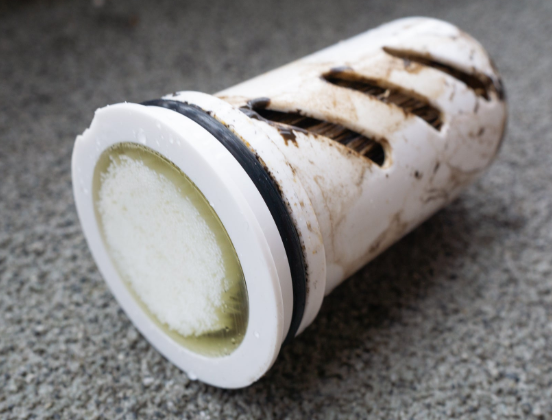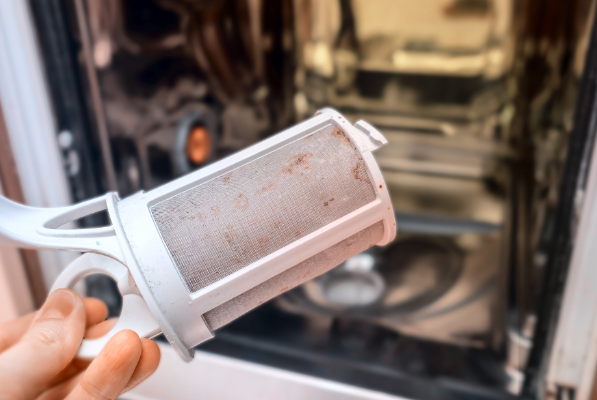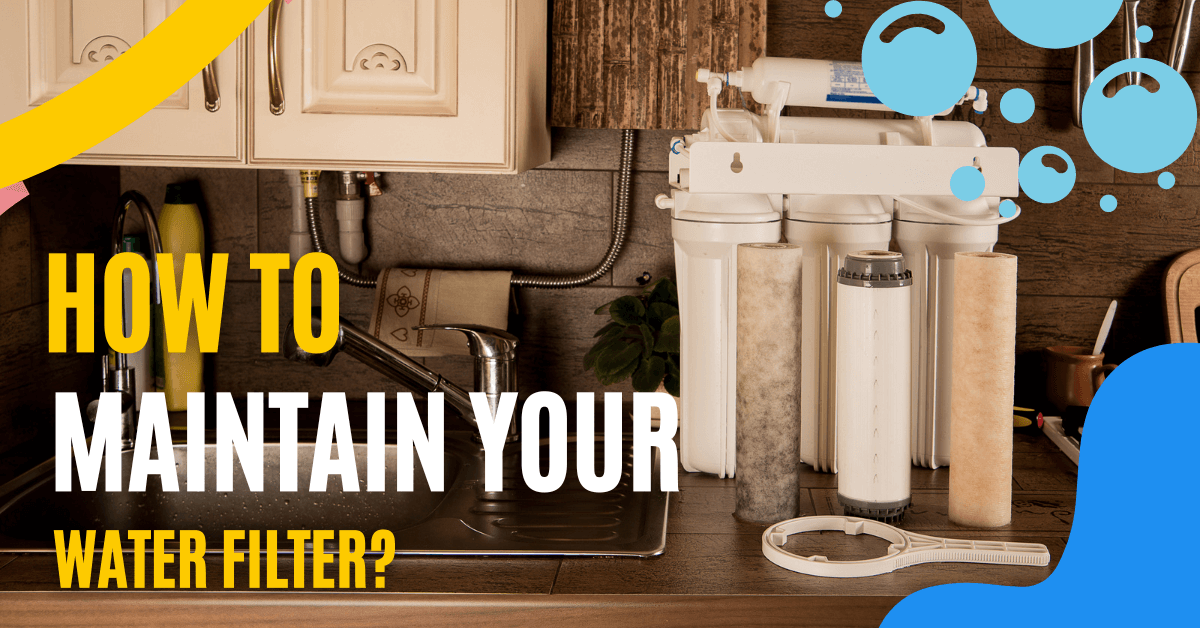Water filters are a great way to ensure that the water you use and drink is clean, safe, and free of contaminants. However, it is important to maintain your filter regularly, as it can become clogged over time and reduce its effectiveness. Water filters, when properly maintained, can last for many years and keep your water tasting fresh.
Why Maintenance Of Water Filters Is Important?
Maintaining your water filter is essential to ensure it continues working effectively. Regular maintenance and inspections can help prolong the life of your water filter and keep it in optimum condition so that it can continue to provide clean, safe drinking water. Not maintaining your water filter could result in clogging, sediment build-up, or worse, becoming a breeding ground for bacteria. Regular maintenance helps prevent water-related illnesses or health issues from contaminated drinking water.
A well-maintained and regularly serviced water filter will ensure safety and reduce the energy required to run it. If the filter becomes clogged or contains sediment, it could use more energy than usual to clean the water. Regular maintenance of the filter will also help to prevent costly repairs and replacements that would be necessary if any part of the filter was damaged due to wear and tear or lack of cleaning.
How To Maintain Your Water Filter?
- Replace water filters regularly: Depending on the type you buy and how much water you use, your filter’s lifespan can vary. If it’s an activated carbon filter, it might need to be replaced monthly or every few months. As a general rule of thumb, replacing your filters at least once a year is best.

Replace water filters regularly - Inspect for leakages: Inspect the water filter regularly for any signs of leakages, such as wet spots or dampness. If you find any, immediately stop using the filter and have it serviced by a professional.
- Maintain a clean exterior: The exterior of your water filter should also be kept clean. Regularly inspect the area around the surface of the filter, paying particular attention to any dust or dirt that may have accumulated in and around it. If you notice any residue, carefully use a damp cloth to wipe it away before rinsing with some warm water. Doing this regularly will prolong the life of your filter and ensure it is functioning correctly.
- Sanitization and thorough cleaning: Every two weeks, perform a sanitization process to ensure your water filter is free of harmful bacteria and dirt. Unscrew the cartridge from the housing unit and fill it with one teaspoon of household bleach per gallon of cold water. Let it sit for 15 minutes before rinsing thoroughly in running tap water. Clean the exterior of your filter using a soft cloth and mild detergent. Allow the parts to air-dry before reassembling.
- Follow the user manual to keep track of service dues: To ensure your water filter is working at its best, it’s essential to follow the user manual that comes with it. This will provide you with a good schedule of when to clean or replace the filter materials and other components. Depending on the type of filter material you are using, this may require periodic cleaning or replacement. For example, activated carbon filters must be replaced every 1-3 months, and sediment filters require cleaning about once a month.
- Avoid harsh cleaning products: Harsh cleaners and detergents can cause damage to the filter that cannot be reversed. A soft cloth for cleaning with warm water and a mild soap is best.
- Plugged water filter into a surger suppressor: A surge suppressor is essential in maintaining your water filter. It helps protect the internal components of the filter from electrical surges, which can happen when a power outage occurs or due to other factors. Using a surge suppressor can help reduce maintenance costs and improve the lifespan of your filter. It also helps prevent any hazards that may arise from an electrical surge. Make sure the outlet you’re plugging your water filter into is a grounded three-prong outlet and that the surge suppressor being used meets safety standards. Inspect it periodically to ensure it hasn’t been damaged or compromised.
- Use water softener media cleaner: The media cleaner is designed to clean the minerals from your water softener. This process can be done every few months and should take about 10 minutes. To do this, remove the top of the filter and empty any debris or dirt that may have been collected there. Next, fill a bucket with a phosphate solution (about 2 ounces per gallon) and submerge the filter. After 10 minutes, remove the filter and drain any remaining solution. Then rinse the filter with water until clean.

water softener media cleaner - Use silicon grease on O-rings during cartridge replacement: When replacing the filter cartridge on your water filter, it’s essential to use it. This helps ensure a good seal and prevents bacteria or pollutants from getting through. Make sure you apply a thin layer of silicone grease around the O-ring before inserting the cartridge into its housing. If you don’t do this, the filter won’t effectively remove contaminants from your water. Additionally, when replacing the O-ring, ensure it is free of dirt or debris and that there are no signs of damage, such as cracks, tears, or discoloration.

silicon grease - Replace UV lamp every year: The UV lamp in your water filter is essential to ensure clean and safe drinking water. It’s vital to replace the UV lamp yearly, as it can become less effective over time. Doing this will help ensure that bacteria or other microorganisms are destroyed before reaching your tap.

UV lamp
FAQs
How long can you leave water in the water filter?
It is recommended that you change the filter after every 3 to 6 months, depending on the water quality and how often you use the filter. However, it is best to replace the filter once a month for optimal results.
Can bacteria grow in water filters?

Yes, bacteria can grow in water filters over time due to stagnant water and debris accumulating. To help prevent bacterial growth, cleaning and maintaining your filter regularly is essential.
Do filters clean water?
Yes, filters remove disruptive particles from the water to make it cleaner, clearer, and safer for drinking. Depending on the type of filter, they can also reduce chlorine levels and other contaminants like lead and cysts. On average, a filter will purify up to 99% of the particles in your water supply.
Is filtered water better for your kidneys?

Yes, drinking filtered water instead of tap water can help reduce the number of harmful contaminants in your body. Not only does it help maintain your kidneys healthy, but it also helps reduce the risk of developing chronic illnesses such as heart disease and cancer.
Which is better, boiled or filtered water?
It depends on the situation. Boiled water is a safe, low-cost method of removing harmful bacteria and contaminants. It can be used where clean, filtered water is unavailable. On the other hand, filtered water may provide a better taste and reduces more contaminants than boiling alone. If you have access to clean, filtered water is the best choice for drinking.
How long should I keep my water filter in use?
The life expectancy of your water filter depends on the type and size you have purchased. Most filters are designed to last for 6-12 months before they need to be replaced. To ensure that your water filter is functioning properly, it’s important to regularly check its performance by testing the purity of filtered water with a water quality test strip.
How often should I change RO purifier?

Typically, a reverse osmosis (RO) purifier should be changed annually. However, depending on the water quality in your area and how much you use RO-purified water, this timeframe can vary. Generally, more frequent filter changes are recommended for areas with higher contaminant levels.
Conclusion
It is essential to regularly maintain your RO purifier by changing the filters annually (or more frequently if needed). This will help ensure that the water produced is clean and safe for drinking. Regular maintenance will also prolong the unit’s life, ensuring it continues to operate optimally over time.

Meet Jeffrey B Roberts, your dedicated guide into the realm of water science and technology. As a hydro biologist with an insatiable curiosity, Jeffrey’s journey has been one of unraveling the mysteries of water systems and advocating for clean, safe water for all.
With an academic background steeped in the sciences, Jeffrey’s passion lies at the crossroads of science, technology, and nature. A deep fascination with plants and genetics has not only enriched their understanding of aquatic ecosystems but has also propelled them into the world of water softening solutions.
Believing that clean water is a basic human right, Jeffrey’s writing transcends the technicalities, making the intricate world of water softening accessible to all. Through their blog, they ardently share insights, tips, and breakthroughs, empowering readers to make informed decisions about their water quality.
Beyond his role as a prolific writer, Jeffrey is a respected figure in the hydronics industry education. With years of hands-on experience, they serve as an adjunct professor, nurturing the next generation of experts at the Thaddeus Stevens College of Technology. His involvement on the Technical Advisory Board further cements their dedication to pushing the boundaries of innovation in water technology.
